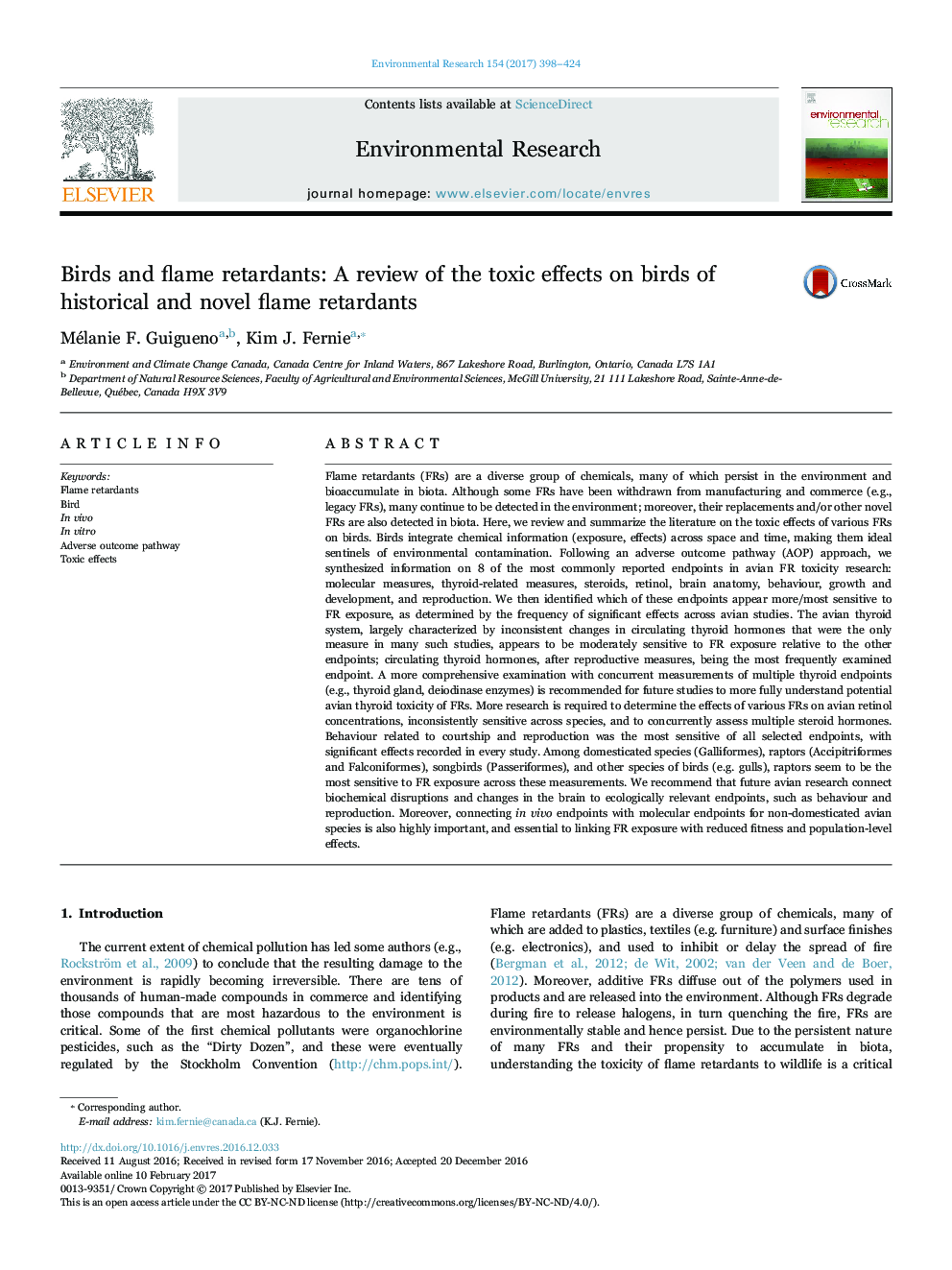| کد مقاله | کد نشریه | سال انتشار | مقاله انگلیسی | نسخه تمام متن |
|---|---|---|---|---|
| 5756430 | 1622549 | 2017 | 27 صفحه PDF | دانلود رایگان |
عنوان انگلیسی مقاله ISI
Birds and flame retardants: A review of the toxic effects on birds of historical and novel flame retardants
ترجمه فارسی عنوان
پرندگان و بازدارنده های شعله: بررسی تاثیرات سمی بر روی پرندگان از بازدارنده های شعله های تاریخی و جدید
دانلود مقاله + سفارش ترجمه
دانلود مقاله ISI انگلیسی
رایگان برای ایرانیان
کلمات کلیدی
موضوعات مرتبط
علوم زیستی و بیوفناوری
علوم محیط زیست
بهداشت، سم شناسی و جهش زایی
چکیده انگلیسی
Flame retardants (FRs) are a diverse group of chemicals, many of which persist in the environment and bioaccumulate in biota. Although some FRs have been withdrawn from manufacturing and commerce (e.g., legacy FRs), many continue to be detected in the environment; moreover, their replacements and/or other novel FRs are also detected in biota. Here, we review and summarize the literature on the toxic effects of various FRs on birds. Birds integrate chemical information (exposure, effects) across space and time, making them ideal sentinels of environmental contamination. Following an adverse outcome pathway (AOP) approach, we synthesized information on 8 of the most commonly reported endpoints in avian FR toxicity research: molecular measures, thyroid-related measures, steroids, retinol, brain anatomy, behaviour, growth and development, and reproduction. We then identified which of these endpoints appear more/most sensitive to FR exposure, as determined by the frequency of significant effects across avian studies. The avian thyroid system, largely characterized by inconsistent changes in circulating thyroid hormones that were the only measure in many such studies, appears to be moderately sensitive to FR exposure relative to the other endpoints; circulating thyroid hormones, after reproductive measures, being the most frequently examined endpoint. A more comprehensive examination with concurrent measurements of multiple thyroid endpoints (e.g., thyroid gland, deiodinase enzymes) is recommended for future studies to more fully understand potential avian thyroid toxicity of FRs. More research is required to determine the effects of various FRs on avian retinol concentrations, inconsistently sensitive across species, and to concurrently assess multiple steroid hormones. Behaviour related to courtship and reproduction was the most sensitive of all selected endpoints, with significant effects recorded in every study. Among domesticated species (Galliformes), raptors (Accipitriformes and Falconiformes), songbirds (Passeriformes), and other species of birds (e.g. gulls), raptors seem to be the most sensitive to FR exposure across these measurements. We recommend that future avian research connect biochemical disruptions and changes in the brain to ecologically relevant endpoints, such as behaviour and reproduction. Moreover, connecting in vivo endpoints with molecular endpoints for non-domesticated avian species is also highly important, and essential to linking FR exposure with reduced fitness and population-level effects.
ناشر
Database: Elsevier - ScienceDirect (ساینس دایرکت)
Journal: Environmental Research - Volume 154, April 2017, Pages 398-424
Journal: Environmental Research - Volume 154, April 2017, Pages 398-424
نویسندگان
Mélanie F. Guigueno, Kim J. Fernie,
